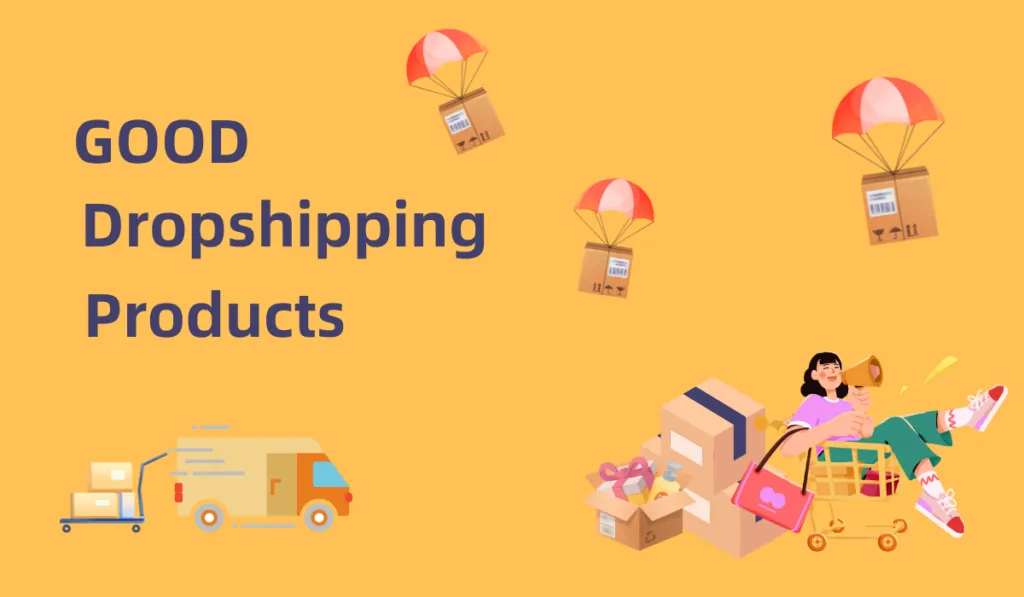In the field of e-commerce, dropshipping has become a popular business model, offering entrepreneurs a low-risk entry into the market without the need for upfront investment in inventory. However, amidst a myriad of products, how do you distinguish gems from duds? How do you identify potential best-sellers that can bring substantial profit returns?

What is Dropshipping?
Before delving into the complexity of product selection, let's first understand the fundamental principles of dropshipping.
Dropshipping, often simply referred to as "consignment sales" is a business model where suppliers or manufacturers entrust their products to retailers or distributors, who then sell the products on their behalf, known as dropshipping. Unlike traditional retail, where retailers purchase inventory and bear all sales responsibilities, dropshipping suppliers only retain ownership of the products until they are sold. Only after a sale is completed, do retailers pay the supplier for the sold goods, while also collecting a commission or profit based on predetermined terms.
This model offers benefits to both suppliers and retailers. For suppliers, dropshipping provides an opportunity to expand their market without the financial risks associated with traditional retail. By leveraging retailers' existing customer base and distribution channels, suppliers can increase sales without investing additional resources. On the other hand, retailers benefit from a diverse range of products, providing their customers with varied choices, usually without the need to invest in inventory upfront, thus lowering some risks. Additionally, dropshipping enables retailers to test new products or profit markets without worrying about excess inventory or financial losses.
Dropshipping VS. Direct Sales
While both dropshipping and direct sales aim to bring products to consumers, they employ significantly different mechanisms and strategies. Understanding the differences between these two models is crucial for businesses seeking the most suitable sales strategy. Dropshipping involves a partnership between suppliers or manufacturers and retailers, with retailers acting as intermediaries, while direct sales typically involve suppliers selling products directly to end consumers without intermediaries.
One key difference lies in product ownership and financial responsibility. In dropshipping sales, suppliers retain ownership until a sale occurs, whereas in direct sales, suppliers own the products from production to sale. This distinction affects aspects such as inventory management, risk allocation, and profit distribution. Another differentiating factor is the level of control and involvement exerted by suppliers and retailers in each model. In dropshipping sales, suppliers rely on retailers to effectively market and sell their products, whereas in direct sales, suppliers have direct control over sales channels and customer interactions. This difference influences decision-making processes, marketing strategies, and overall customer experience.
Current Best-Selling Dropshipping Products
While the market is flooded with various products vying for attention, certain categories consistently outperform others in the dropshipping realm. We will explore these lucrative niches and reveal the position of products on the path to success in today's ever-evolving e-commerce landscape.
Health-Related Products
With increasing emphasis on health, there is high demand for this category of products. From fitness equipment and supplements to skincare and aromatherapy products, the range of dropshipping products available is extensive.

Sustainable and Eco-Friendly Products
As consumer awareness of environmental issues grows, so does the demand for sustainable and eco-friendly products. This includes reusable household items, organic skincare products, and eco-friendly fashion accessories that adhere to green living principles.
Pet Supplies
Pet owners are willing to invest in high-quality products for their furry friends, making pet supplies a lucrative option for dropshipping. From grooming tools to pet toys and food accessories, the pet care market presents ample opportunities.

Personalized and Customized Items
In a world that celebrates individuality, personalized and customized products are gaining popularity. Personalized gifts, custom clothing, and unique accessories tailored to each customer's preferences are increasingly sought after, presenting a profitable opportunity for dropshipping businesses.
Fashionable Technological Innovations
Products that cater to the latest trends and technological innovations typically perform well in the dropshipping market. This includes smart home devices, portable gadgets, and unique accessories, which attract tech-savvy consumers seeking convenience and novelty.
Fashion and Apparel
Despite fierce competition in the fashion industry, there are still opportunities for success in dropshipping by offering unique and stylish clothing and accessories.

Home and Kitchen Essentials
Home and kitchen essentials are essential commodities with a large market. From innovative kitchen gadgets to decorative items, this category offers a wide variety of products.
Beauty and Skincare Products
The beauty and skincare industry continues to thrive, with consumers constantly seeking new products and trends. By offering curated beauty products, skincare essentials, and cosmetics, dropshipping businesses can carve out a niche.
Educational and Learning Products
With the rise of remote learning and self-improvement, educational and learning products are becoming increasingly popular. This includes online courses, educational toys, and skill training resources, catering to the needs of lifelong learners of all ages.

How to Find Hot Selling Dropshipping Products?
Dropshipping offers entrepreneurs a lucrative opportunity to start an online business with minimal upfront investment. However, the key to success in dropshipping lies in finding hot-selling products that resonate with your target audience. With countless products available in the market, it can be challenging to identify which ones will yield the highest returns. Here are some effective strategies to help you find popular products for dropshipping:
- Market Research: Conduct thorough market research to identify trending niches and products with high demand. Use tools like Google Trends, Amazon Best Sellers, and social media platforms to gauge consumer interest and identify popular product categories.
- Analyze Competitors: Study your competitors to see which products are performing well in the dropshipping market. Analyze their product offerings, pricing strategies, and customer reviews to identify gaps and opportunities for differentiation.
- Consider Seasonal Trends: Pay attention to seasonal trends and holidays to capitalize on seasonal demand. Seasonal products like holiday decorations, summer essentials, and back-to-school supplies can generate significant sales during peak seasons.
- Use Dropshipping Platforms: In addition to exploring renowned platforms such as Oberlo, AliExpress, and SaleHoo, consider leveraging Syncee as a dynamic B2B dropshipping platform. Syncee facilitates seamless connections between retailers and suppliers not only in the US and Canada but globally as well. Boasting a diverse array of products and vetted brands, Syncee ensures a smooth fulfillment process for the orders your online store receives.
- Leverage Data Analysis Tools: Use data analysis tools and software to track sales trends, analyze customer behavior, and identify top-performing products. Tools like Google Analytics, Shopify Analytics, and WooCommerce Reports provide valuable insights into your store's performance and customer preferences.
- Conduct Keyword Research: Use keyword research tools like Google Keyword Planner, SEMrush, and Ahrefs to identify relevant keywords and search terms related to your niche. Optimize your product listings and website content with targeted keywords to improve visibility and attract organic traffic.
- Pay Attention to Customer Feedback: Pay attention to customer feedback and reviews to understand their preferences and pain points. Use customer feedback to improve existing products, identify new product opportunities, and enhance the overall shopping experience.
- Test Products with Small Batches: Evaluate the popularity and profitability of new products by testing them with small or limited quantities. Use A/B testing and analytics tools to measure the performance of different products and optimize your product selection over time.
- Stay Updated on Industry Trends: Stay informed about industry trends, technological advancements, and emerging markets to stay ahead of the curve. Subscribe to industry publications, attend trade shows, or connect with industry experts to stay abreast of the latest developments.
- Follow Your Passion: Choose products that align with your interests, passions, and expertise. Selling products you're passionate about can make it easier to create compelling marketing content, genuinely engage with customers, and build a successful dropshipping business in the long run.
Unlock Dropshipping Success with BigSpy!
If you're still unsure about how to choose products or find the aforementioned tools and processes too cumbersome, consider trying BigSpy.
On the path to dropshipping success, inspiration can be a powerful ally. BigSpy is a valuable tool for businesses seeking to understand consumer preferences and market trends. By analyzing data from popular advertisements, learning how to use its features to discover product trends, spy on competitors, and develop successful marketing campaigns, you can better resonate with your target audience and propel your dropshipping business to new heights.
With the insights and strategies revealed in this comprehensive guide, embark on your journey to dropshipping success. Whether you're an experienced entrepreneur or a novice e-commerce enthusiast, mastering the art of product selection is the key to unlocking the full potential of your dropshipping venture.













